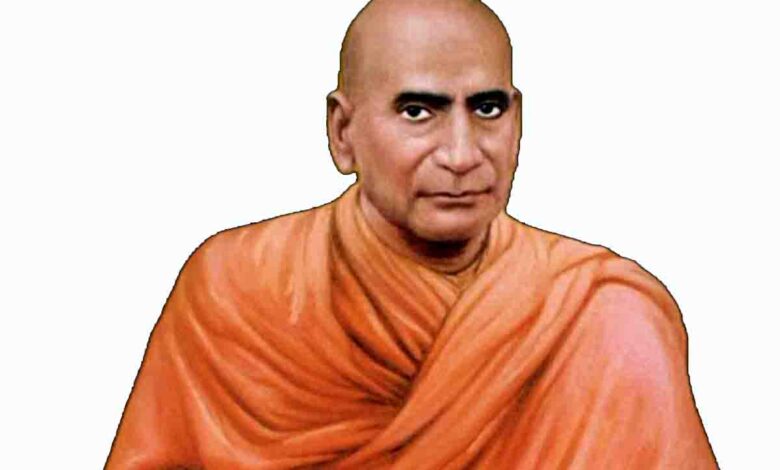Shuddhi: A mission-powered movement that suffered a gory end

VIEW POINT
 ROMIT BAGCHI
ROMIT BAGCHI
After the announcement of the Lok Sabha poll result and the formation of the new government, ‘ghar wapsi’ or incidents of reconversion have been happening in several parts of the country with Muslim families and individuals voluntarily returning to the Sanatan Dharma by renouncing their Islamic faith. After the purification rituals are performed, they are being quoted as stating in unison that they have felt impelled to return to their ancestral faith. No one knows how far things will go: whether it will become a spontaneous mass movement or will be restricted to a few or will peter out in course of time.
The recent spurt in ‘homecoming’ has prodded me to recall the organised reconversion venture known in history as Shuddhi movement which happened under the patronage of Arya Samaj in the cataclysmic period of time from 1923 to 1926.
It started in 1923 under the leadership of an Arya Samaj stalwart Swami Sharaddhananada after the much-vaunted Hindu-Muslim fraternity- conjured up by Mahatma Gandhi out of nothing in the name of the Non-Cooperation and Khilafat Movement- fizzled out, resulting in eruption of gory riots and horror of forced conversion in some parts of the country.
The period from 1921 to 1922 was communally volatile, swinging from bonhomie to barbarism. During the time when an unprecedented Hindu-Muslim camaraderie was sweeping across the country, Swami Sharaddhananada who was then leading the movement against the Rowlatt Act was requested by some Muslim leaders to preach from the pulpit of Jama Masjid in Delhi. Taking things further, Hindu and Muslim leaders kept on addressing people from masjids and temples respectively. Overwhelmed by the Hindu-Muslim harmony reigning across the country, the Swami averred emotionally: “Ram Rajya has finally set in the country.”
It was then that the notorious Moplah rebellion (1921-22) happened in Malabar now known as Kerala. The Muslim crusaders for Khilafat killed Hindus in large numbers to purify Malabar of the impure in order to bring the region under the reign of Caliphate. Things began on September 25, 1921 when about 40 Hindus were shot, beheaded and thrown in a well. After the revolutionary statesman and founding father of the Republic of Turkey Mustafa Kemal Ataturk abolished the institution of Caliphate in 1924, things worsened with the fulcrum of Hindu-Muslim unity having crumbled. The hardliners in both the communities intensified their activities.
While the Congress was divided between the camps of pro-changers and no-changers, the Hindu Mahasabha was revived under Pandit Madan Mohan Malaviya. The Arya Samaj became hyper-active on reconversion, prompting the Muslim hardliners to start the revivalist Tabligh and Tanzim movement. The year 1925 saw the foundation of Rashtriya Swayamsevak Sangh in Nagpur. While 16 riots occurred in 1925 the number surged to 25 the following year. The worst riot happened in Calcutta in April 1926. The violence erupted when a rally, taken out by the Arya Samaj activists, was passing through a lane where there was a masjid. It quickly spread to the suburban areas. With the communal frenzy engulfing the whole country, an elated British ICS Sir Harcourt Butler wrote humorously to then Viceroy Lord Reading: “Hindu and Mussalman hate each other so much that they have not much time to hate us.”
It was in this communally combustive atmosphere that Swami Sharaddhananada started and piloted the Shuddhi movement. Essentially meant to combat Islam’s exclusive legacy of proselytising, it focused on reclaiming the Hindus whose ancestors had gone over to Islam. Aware that the orthodox elements in the Hindu society were inimical to the idea of reconversion considering it as antithetical to the soul of Hinduism, the Swami and his followers took great pains to disprove and disarm the Hindu orthodox school. They had to churn out literature in regional languages to lend scriptural validity to Shuddhi.
History says that after the Islamic supremacy was firmly established in large parts of the subcontinent, the Hindus adopted an ostrich policy, choosing to ignore the obvious while pretending that it did not exist when millions of Hindus were leaving their ancestral faith and converting to Islam under coercion or conspiracy. Worse, the orthodox society started expelling such converts from the body of Hinduism. Things went to such an extent that a person who took water from a Muslim faced the risk of prompt excommunication.
As the Shuddhi movement was gaining momentum, the Muslim activists became desperate to prevent these initiatives. To take on the organised Muslim resistance, the Swami announced the formation of Bharatiya Hindu Shuddhi Sabha. Under the banner of this organisation, the Shuddhi movement continued, bringing back thousands to the Hindu fold in a short span of time.
In March 1926, a Muslim woman from Karachi secretly came to Delhi with her children and urged the Swami to convert her to Sanatan Dharma. The purification was performed and she was renamed Shanti Devi. The furious husband filed an abduction case. On December 26 the same year, a Muslim entered the Swami’s house and fired two shots at his chest from point blank range.
Interestingly, though Mahatma Gandhi was ideologically opposed to the Shuddhi movement-for he believed that proselytism practice was incompatible with the pure concept of Hinduism-he joined Malaviya at the mammoth condemnation gathering held in Calcutta to raise fund to build a memorial to the slain Swami. Rabindranath Tagore penned an emotional piece titled ‘Swami Sharaddhananda’, strongly condemning the killing of the mission-charged ascetic. He wrote he was filled with sorrow and shame over the cowardly assassination.
All said and done, one thing must be mentioned here that the Sanatan Dharma is an eternal religion which is nothing if it cannot embrace other religions. It believes that all religions existing in the world have some spiritual elements inherent in them and there are instances of many who have evolved spiritually while practising their respective religions. This is the beauty of Sanatan Dharma unparalleled and peerless.
Again, we must ponder over the trigger that forced multitude of people renouncing their ancestral religion and going over to the two Abrahamic religions-Islam and Christianity, particularly the latter-at a critical juncture of the nation’s history when the Sanatan Dharma and the Hindu nation were both in a deep decline, inviting waves of invasions from outside. It was when the inhuman practice of untouchability was reigning supreme across the nation, stemming from caste insolence with the upper caste people looking down upon their lower caste brethren as contaminated beings. In an electrifying speech titled ‘The Future of India’, Swami Vivekananda said unequivocally that the Mohammedan conquest of India had come as a salvation to the downtrodden with one-fifth of the people having become Mohammedans. “It was not the sword that did it all. It would be the height of madness to think it was all the work of sword and fire,” he said.





